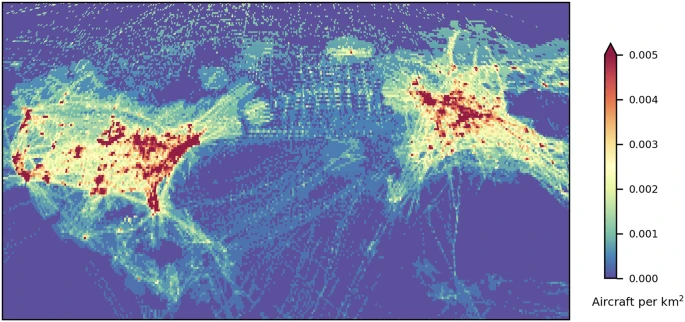Aviation experts have unveiled a groundbreaking safety approach inspired by the human body’s natural defense mechanisms, potentially transforming how we protect increasingly complex air transportation systems from known and unknown risks.
In a review paper published in the journal Engineering, researchers propose a novel safety framework called “system-of-systems (SoS) safety” that draws inspiration from the human immune system to address emerging challenges in future air travel scenarios.
“With the anticipated growth in air traffic complexity in the coming years, future civil aviation transportation system (CATS) is transforming into a complex cyber–physical–social system, surpassing all previous experiences in the history of civil aviation safety management,” the paper states.
The shift toward this new approach comes at a critical time. While global aviation has achieved remarkable safety levels – with fatal accident rates below 0.2 per million flights for nearly a decade – researchers warn this stability might become difficult to maintain as air traffic volume and complexity continue to grow.
According to the study, passenger traffic is projected to increase 4.3% annually over the next two decades, resulting in more than 200,000 daily flights by the mid-2030s. This growth brings unprecedented challenges, particularly with the emergence of urban air mobility (UAM) – flying taxis and delivery drones operating in densely populated areas.
Booz Allen Hamilton forecasts that UAM could generate up to 11 million daily trips under unconstrained scenarios – a staggering 244 times the Federal Aviation Administration’s current average daily flight volume.
Lead author Daqing Li and colleagues analyzed the evolution of aviation safety across four generations, noting that each new wave of technology initially led to higher accident rates before safety improvements followed. This pattern raises serious concerns about integrating numerous cutting-edge technologies into future aviation systems.
“If we apply the 2022 civil aviation safety level to the UAM scenario, the number of daily accidents will reach a staggering 0.77, equating to two fatal accidents every three days,” the researchers calculate.
The proposed SoS safety framework borrows key principles from human immunology. Just as our immune system constantly defends against various threats through layers of protection, the researchers envision a three-tiered defense strategy for aviation:
The first line relies on regulatory constraints to prevent known risks, similar to physical barriers like skin preventing pathogens from entering the body. The second line provides real-time monitoring and intelligent decision-making to address emerging threats, comparable to the body’s innate immune response. The third line focuses on identifying and understanding unknown risks through digital engineering and simulation – akin to the adaptive immune system that learns to recognize new threats.
“The SoS safety concept indicates the transition from ‘process and outcome-oriented’ to ‘capability-oriented’ intelligent safety management,” the researchers explain.
Implementation of this framework is expected to unfold in three phases over the coming decades. Phase one focuses on enhancing operational resilience through technologies like 5G air-to-ground communications and IoT sensors. Phase two extends safety capabilities to the design process, while phase three aims to achieve full integration between design and operation through artificial intelligence.
Several aviation organizations have already begun exploring resilience management approaches, including American Airlines, Lufthansa, Ryanair, and air traffic control providers like EUROCONTROL.
Although developed for aviation, the researchers believe their approach could benefit other complex systems facing similar challenges.
“SoS safety can serve as a guiding framework and methodology for safety engineering in most large-scale complex systems, such as internet of vehicles, emergency systems, and cyber-physical systems,” they conclude.
With air taxis potentially filling urban skies within the decade, this immune-inspired approach to safety management may prove essential for maintaining public confidence in the future of flight.
If our reporting has informed or inspired you, please consider making a donation. Every contribution, no matter the size, empowers us to continue delivering accurate, engaging, and trustworthy science and medical news. Independent journalism requires time, effort, and resources—your support ensures we can keep uncovering the stories that matter most to you.
Join us in making knowledge accessible and impactful. Thank you for standing with us!

